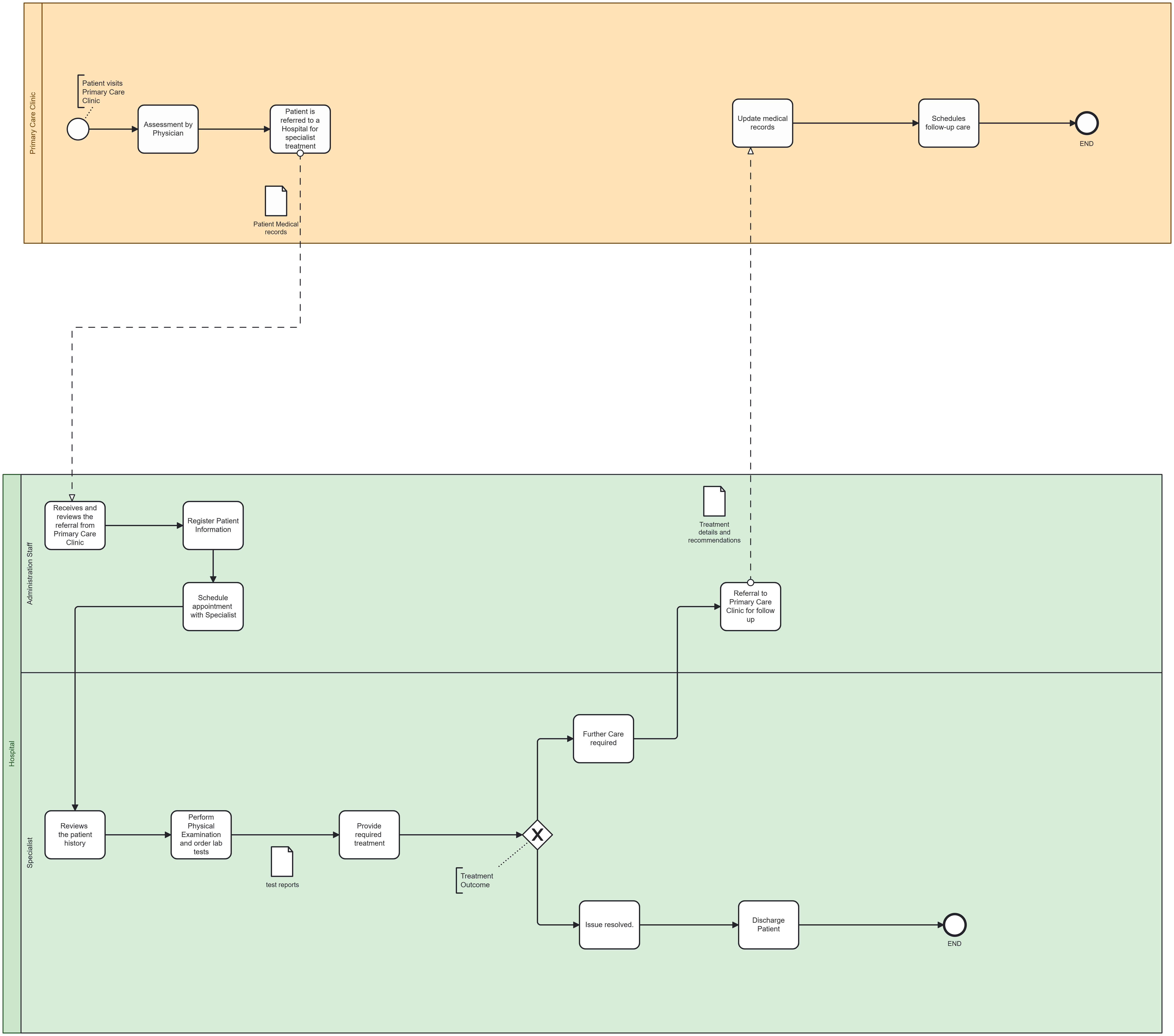Health Informatics ETL Pipeline Project
This website showcases the development of our ETL pipeline.
Project maintained by SaiSrilekhaaluru Hosted on GitHub Pages — Theme by mattgraham
BPMN Model Page
| Home | |
| BPMN Model | |
| Use Case Model | |
| ETL Pipeline | |
| Insights | |
| Team Contributions | |
| About |

BPMN Model Explanation
The BPMN model represents the workflow of a patient’s journey through the healthcare system, starting from their visit to a Primary Care Clinic to receiving treatment and follow-up care. It involves three key participants: the Primary Care Clinic, Administrative Staff, and Hospital Specialists.
Workflow Steps:
- Primary Care Clinic:
- The patient visits the clinic and is assessed by a physician.
- If further treatment is required, the patient is referred to a hospital specialist, and their medical records are updated.
- The clinic schedules follow-up care based on the treatment plan.
- Administrative Staff:
- Upon receiving the referral, the staff registers the patient’s details in the hospital system.
- They schedule an appointment with the appropriate specialist and provide treatment-related documents as needed.
- Hospital Specialist:
- The specialist reviews the patient’s medical history, conducts necessary examinations, and performs diagnostic tests.
- Based on the results, the specialist provides treatment and monitors the outcomes.
Key Decisions:
- After treatment, a decision is made on whether the issue is resolved:
- If resolved: The patient is discharged with follow-up recommendations.
- If unresolved: The patient continues care within the hospital or is referred back to the Primary Care Clinic for follow-up.
Benefits of the Workflow:
- Ensures seamless communication and coordination between the Primary Care Clinic, hospital staff, and specialists.
- Facilitates efficient documentation and treatment planning.
- Enhances patient care by minimizing delays in diagnosis and treatment.
This BPMN model showcases a structured approach to managing patient care across multiple stakeholders, highlighting the importance of clear roles, proper documentation, and effective decision-making.